Submitted by WA Contents
Humber Residence creates a "monumental and voluminous feeling" in Toronto neighbourhood
Canada Architecture News - Oct 17, 2023 - 14:55 2524 views
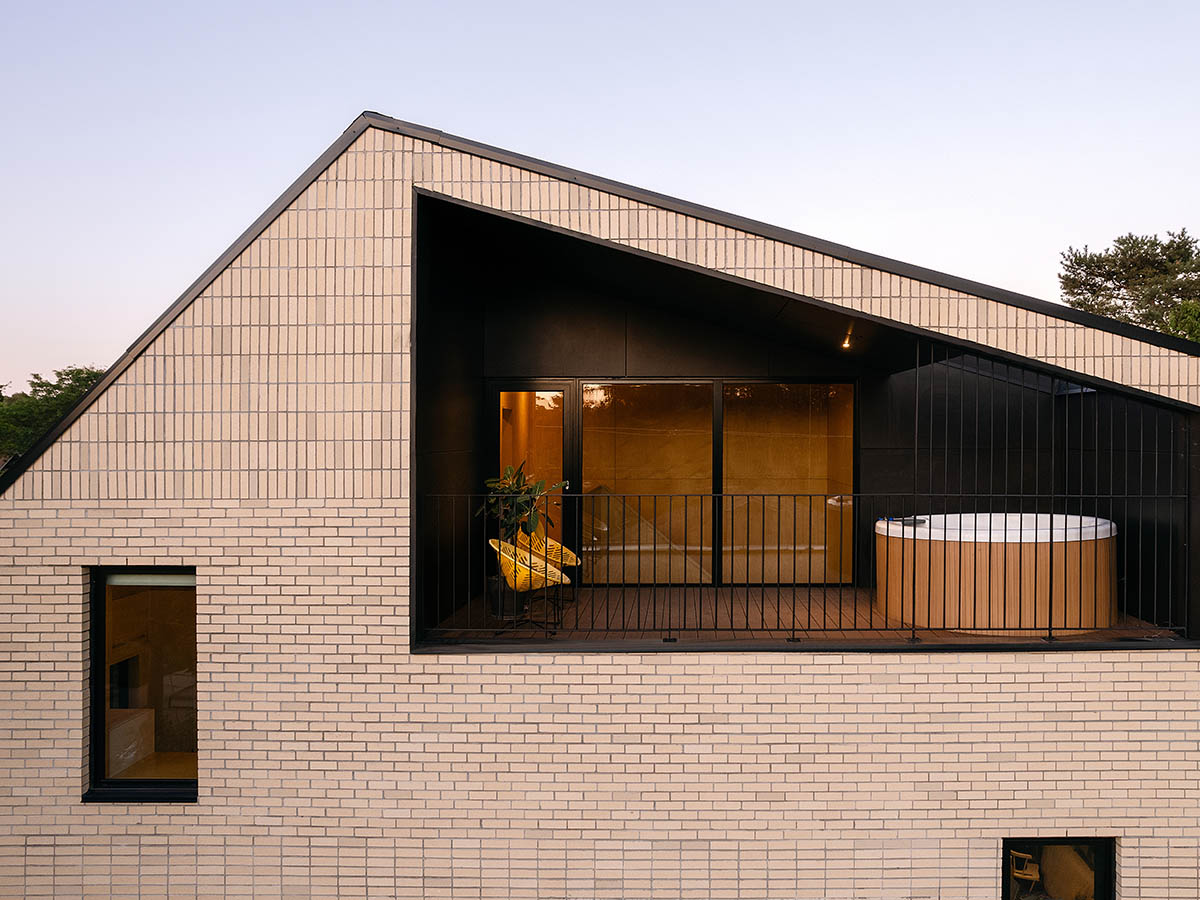
Toronto-based architecture practice Batay-Csorba Architects has built a residence featuring a spacious three-storey atrium to bring a plenty of light into interior spaces, aiming to create a monumental and voluminous feeling in Toronto's Baby Point neighbourhood, Canada.
Named Humber Residence, the 2,000-square-foot (186-square-metre) residence emerged as a new infill project in Toronto's Baby Point neighbourhood.
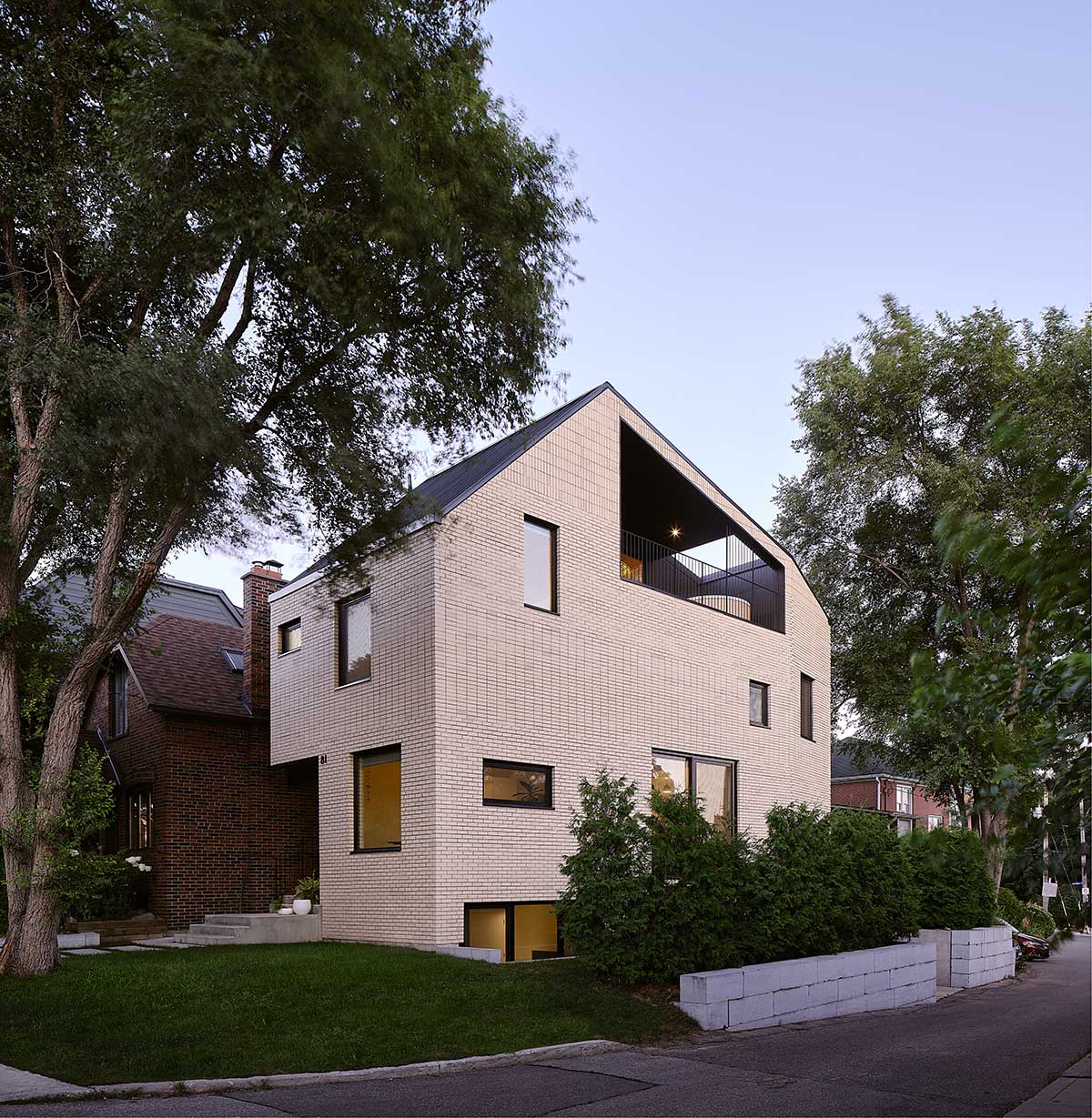
The neighbourhood is bordered to the west by the winding Humber River, many houses in the Baby Point area enjoy sought-after views of the river valley.
The richness of interior spaces is enhanced with a spacious three-storey atrium and a sheltered outdoor balcony carved out beneath the sloping roof, which make the protagonists of design and trigger the feelings of homeowners to explore.
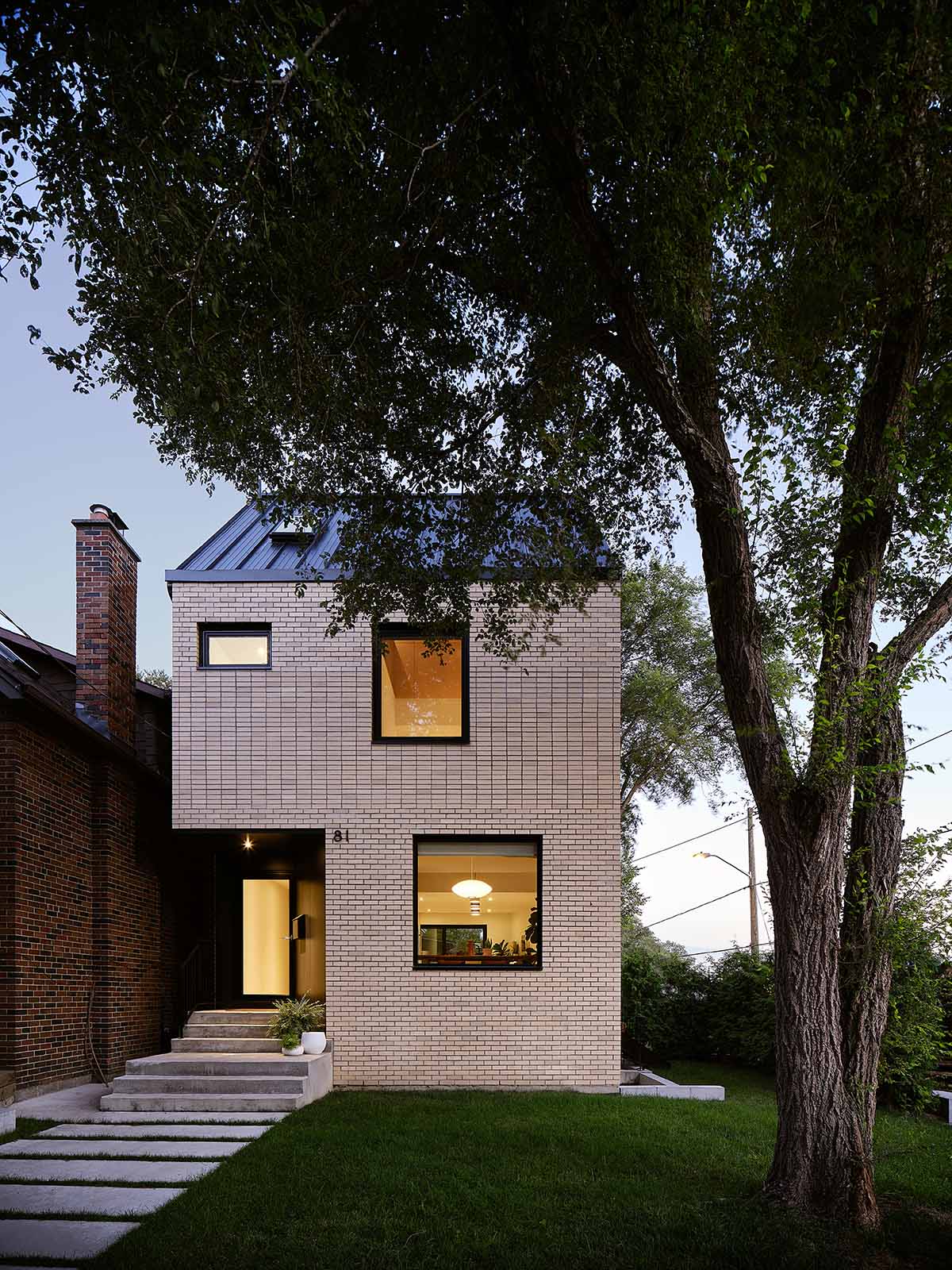
"A monumental and voluminous sense of space"
According to the studio, the house provides "a monumental and voluminous sense of space" that is created not with vast room sizes or uninhabited rooms, but also it differentiates with its verticality as its central organizing principle.
The house is situated on a small plot measuring 65’x20’ (1,65 meters by a half meter) pie-shaped corner lot.
The corner plot became coinciding drivers determining the spatial organization and hierarchy.

Batay-Csorba Architects said "unlike the typical narrow Toronto lots, being on a corner site allowed for far more freedom to bring natural light into the various living spaces and, in this case, the long side of the site also happened to be the one facing the distant Humber River."
"This lent the opportunity to work in sections to devise a dynamic space that not only opened the house up to let light in, but soared up to a lookout point to see over adjacent buildings to the river."
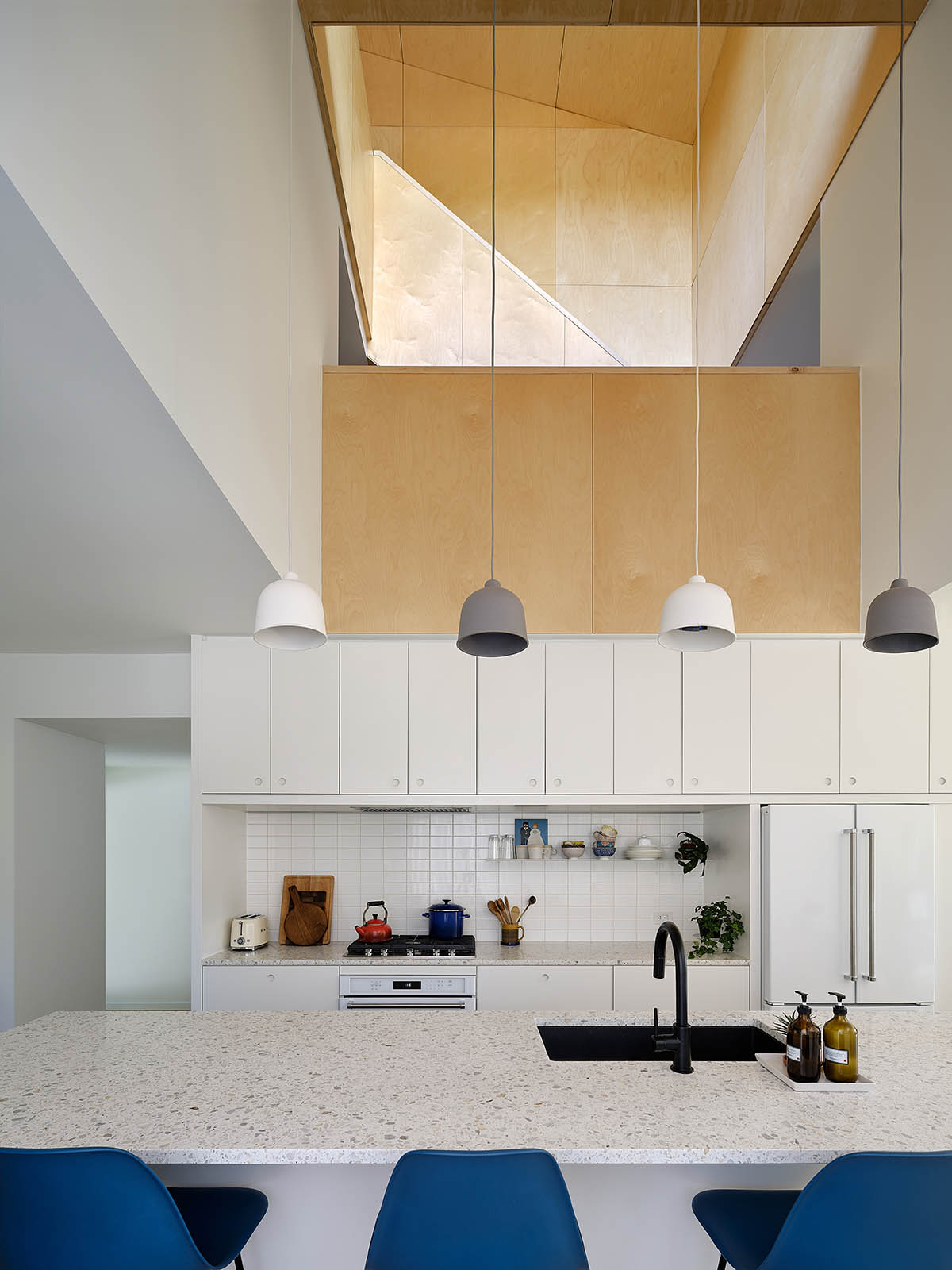
Here, rather than using punctual light wells to bring in light, as is customary in narrow lots, the three-storey circulation is isolated and left open, stretching through a grand three-storey atrium space to arrive at a sheltered outdoor balcony carved out beneath the sloping roof.
A transition of materials demarcates the significance of this space within the home, while highlighting the visual connectivity between it and the other major public spaces.

The Ravine house is a modest three-bedroom home by today’s standards. With a compact building footprint, each room is resolutely designed to be well-proportioned and comfortable, but not excessive.
Corridors and stairwells are minimized, there are no walk-in closets, pantries, or unused bonus rooms, bedrooms are compact with space-saving built in furniture and wardrobes, laundry is built in off the circulation hall, and every square inch of space is thoughtfully designed and utilized to respond to the site’s compact circumstances.
And yet, there are beautifully considered architectural details that speak of quality, attention, and care.

The house explore "verticality"
Inside, the interior spaces are interlocked and combined to generate multi-layered programmed spaces akin to a stacked tree house.
Tucked into the roof peak, above the children’s bedrooms, are hidden reading lofts accessed by custom access ladders. Overlooking the primary bedroom is a small office and music studio.
The home is focused around a dramatic central three-story wood clad lightwell, functioning as both a light monitor, a ventilation chimney that cools the home, and vertical circulation.

At the top, large south facing doors open onto a covered roof deck with panoramic views of the Humber River, and a Japanese soaking tub for taking it all in.
Southern light is collected within the wooden liner, illuminating the interior in a warm and calming amber glow.

"An anti-museum aesthetic"
While the exterior skin references to the context, the façade is clad in old historical buff yellow brick in varying banded coursing patterns across the facades and a steep pitched roof.
The front entry and third floor deck are carved from brick with contrasting black sintered stone panels.
In the interior spaces, the studio used a casual and affordable palette of natural materials to provide an anti-museum aesthetic, with recycled strip plank wood flooring, Baltic birch paneling, terrazzo, and concrete.
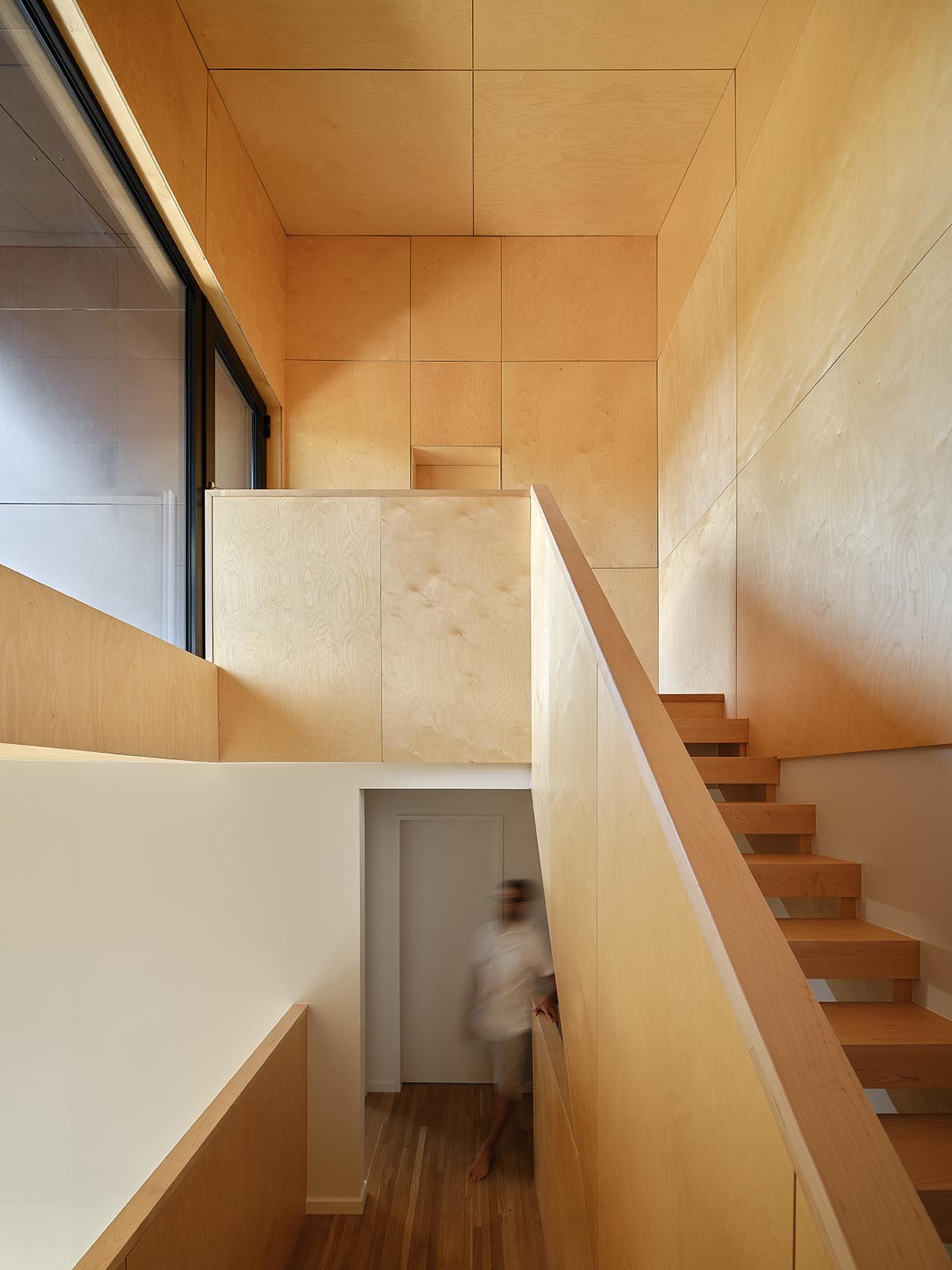
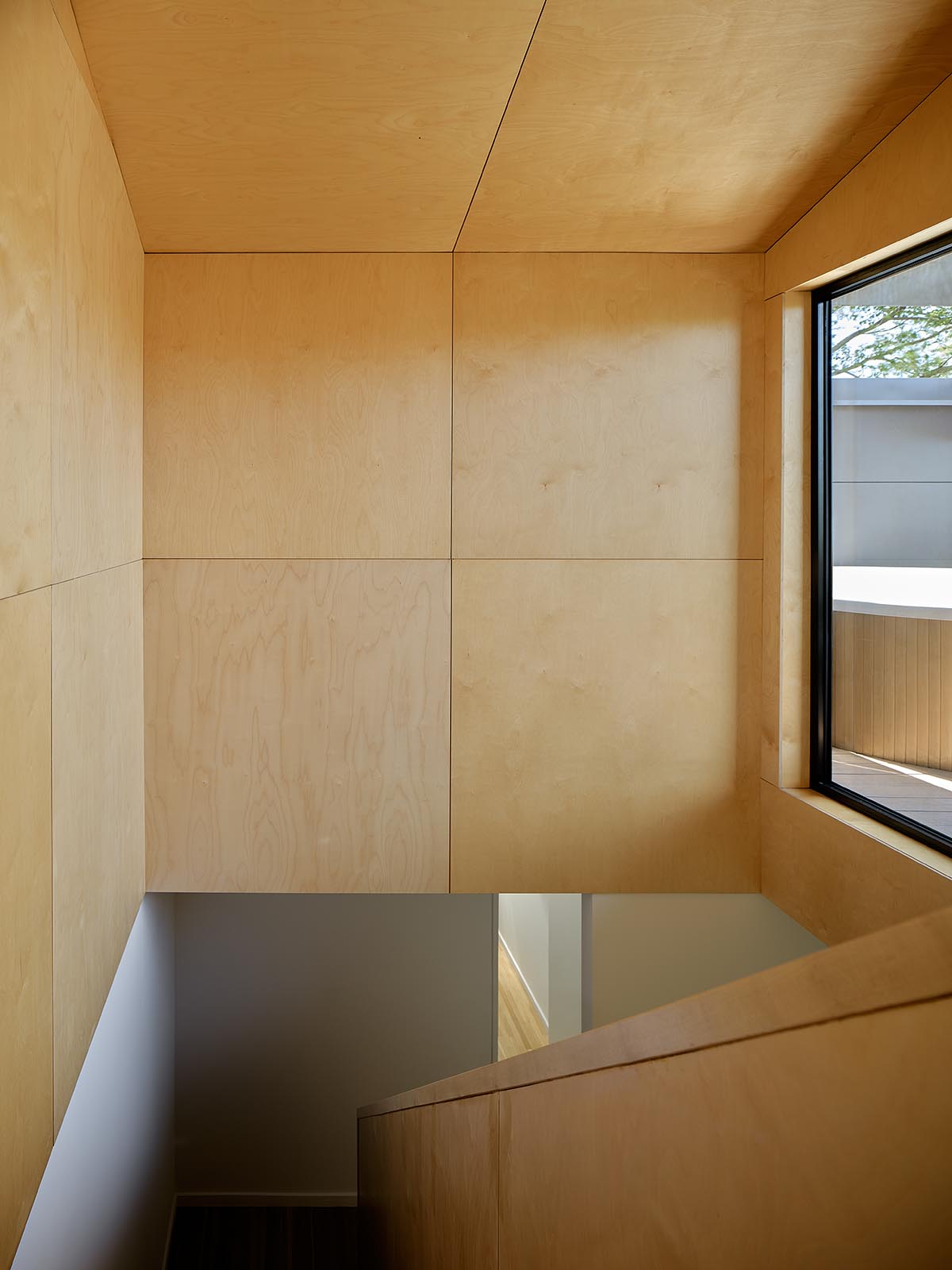



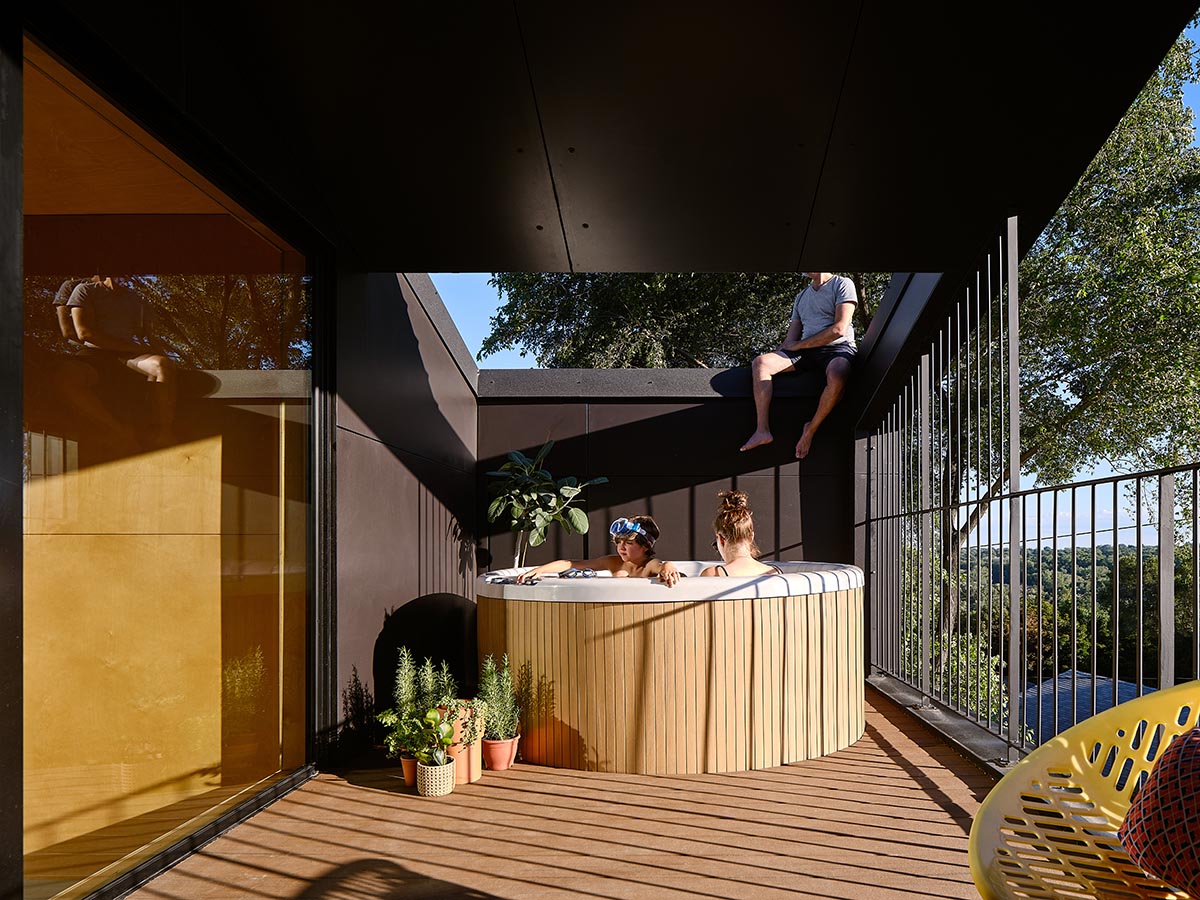



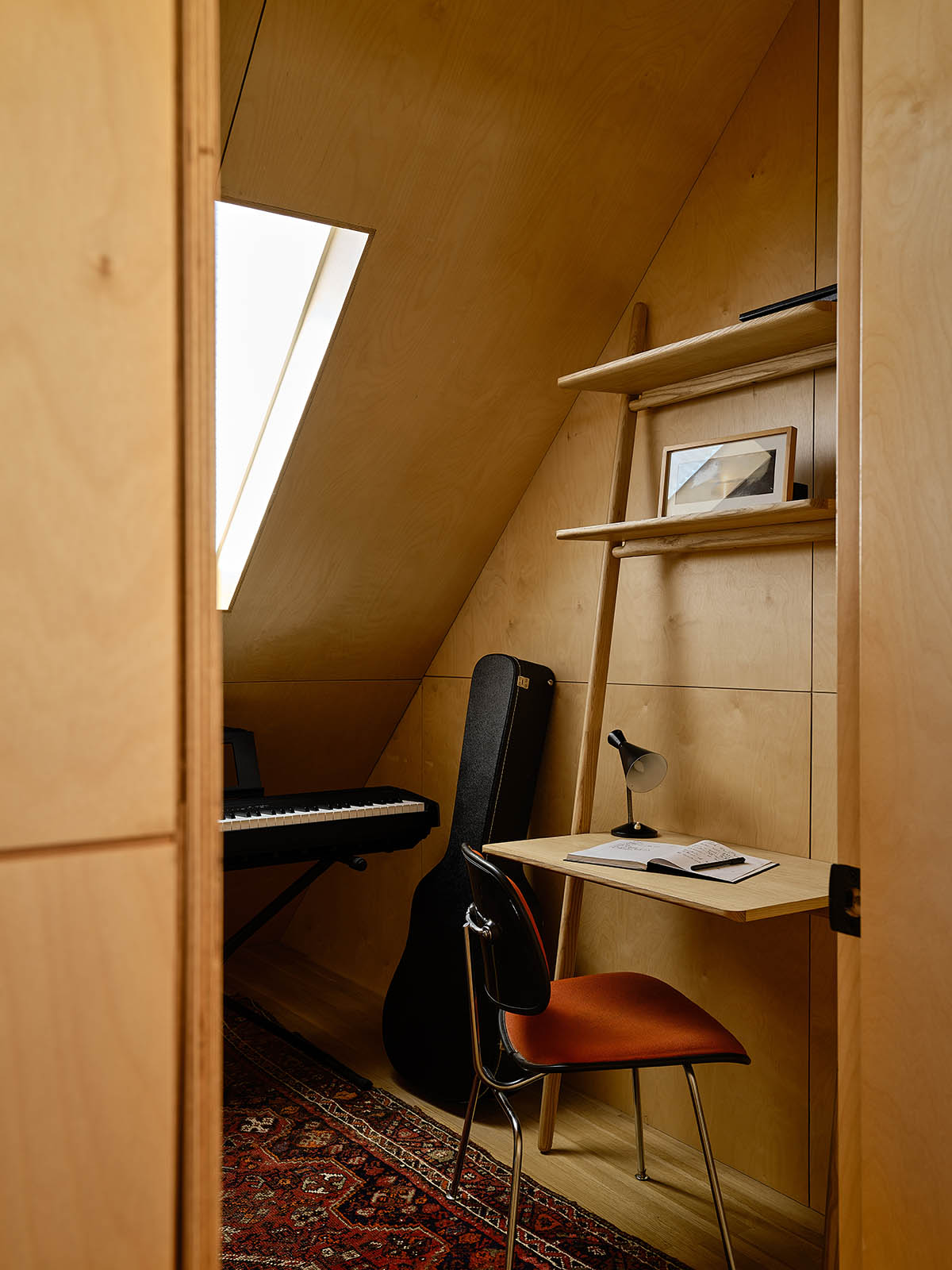
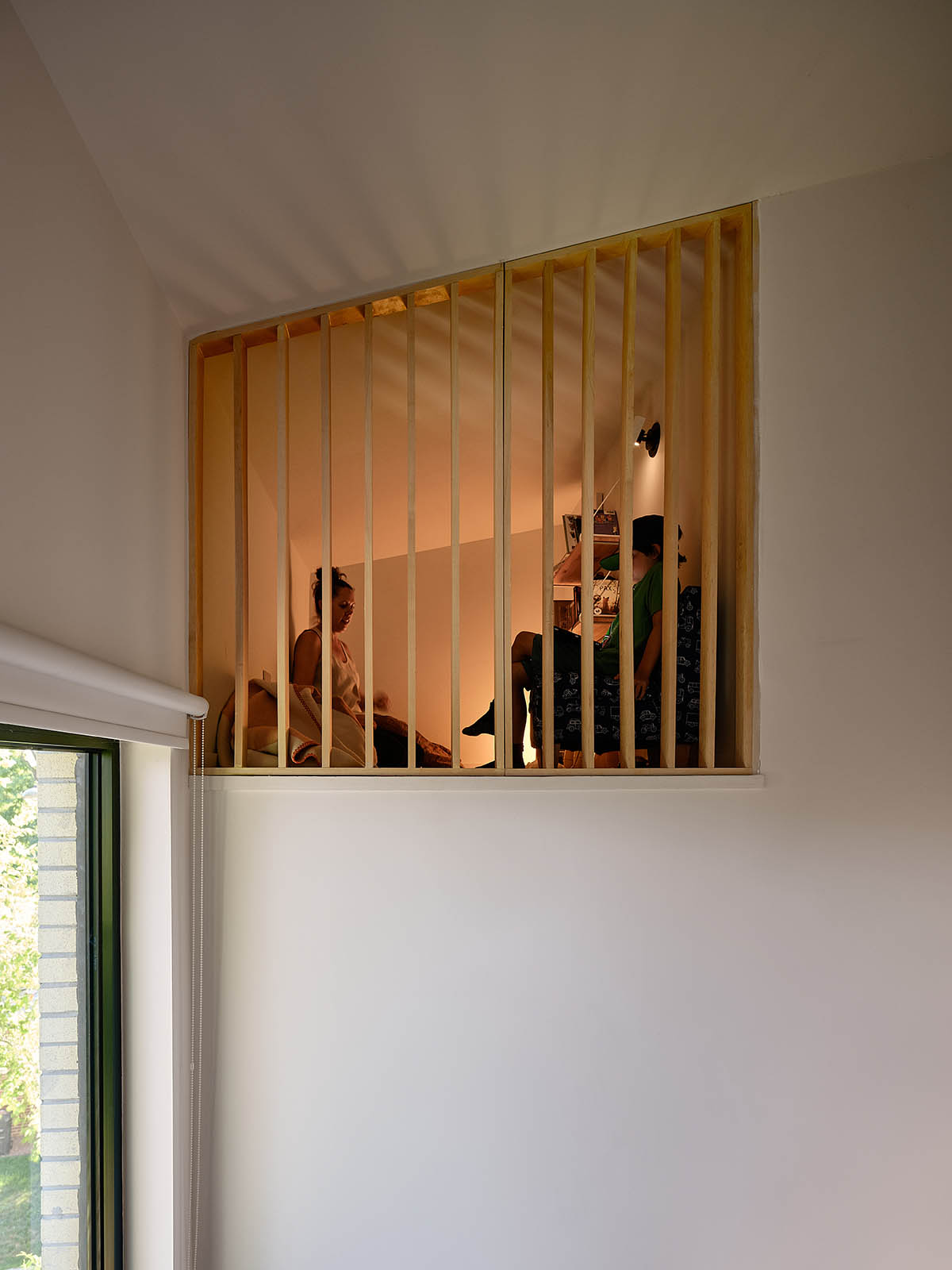

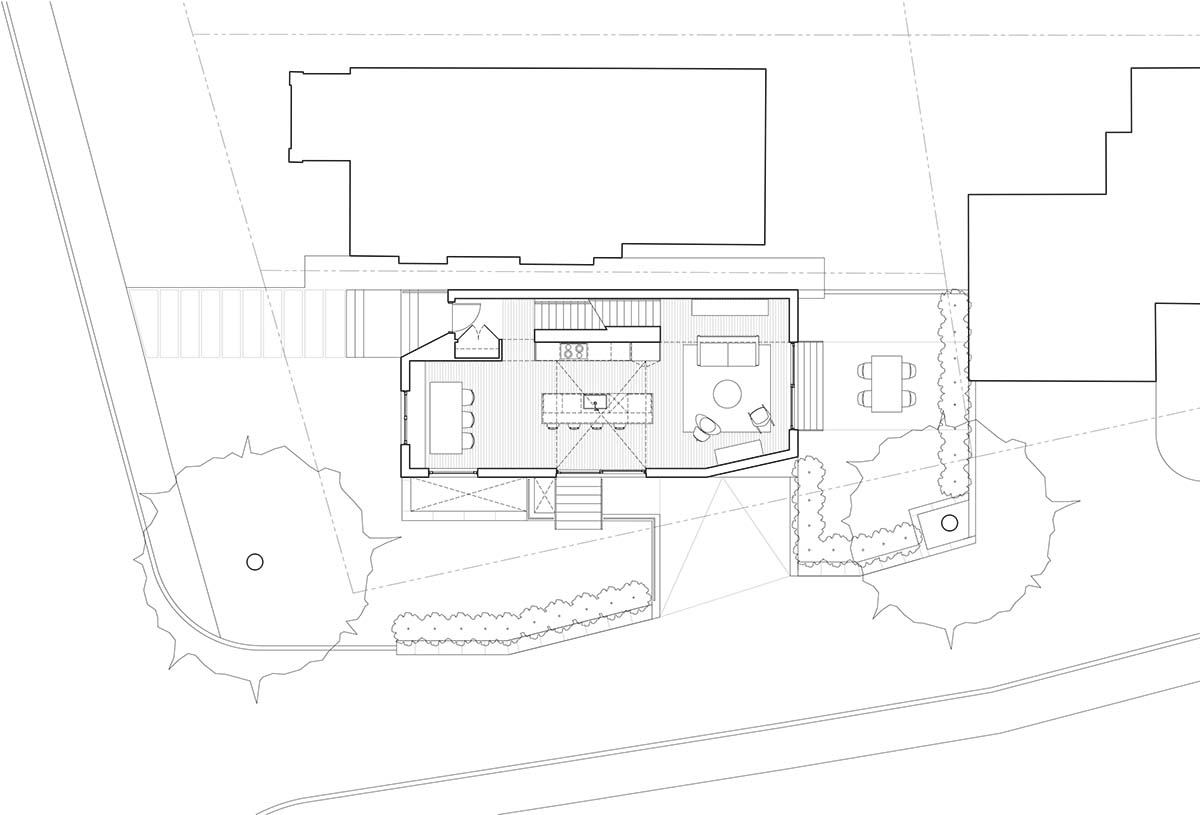
Basement floor plan

First floor plan
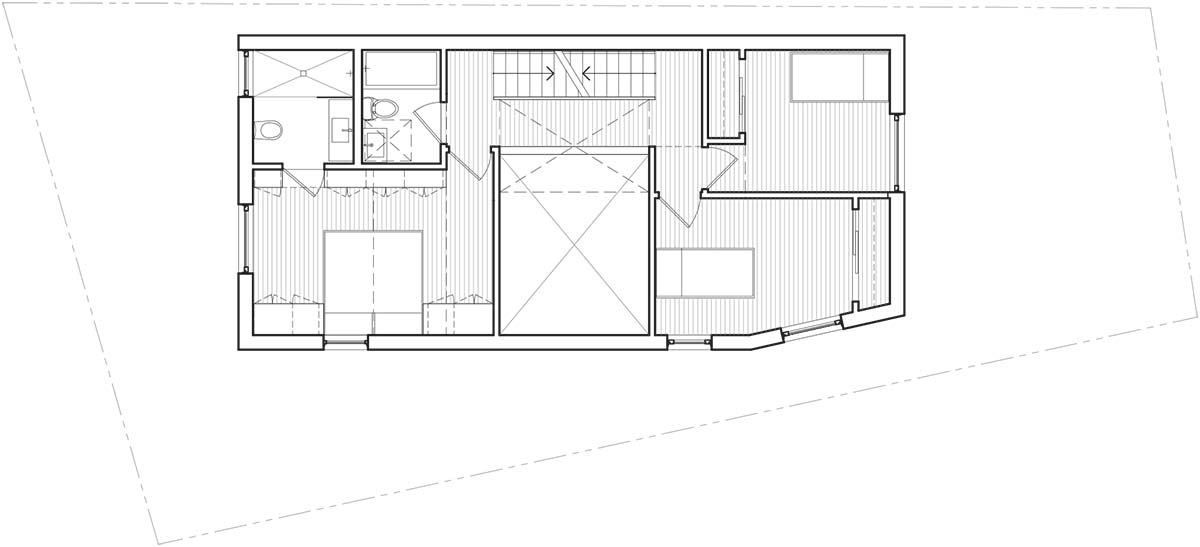
Second floor plan

Third floor plan
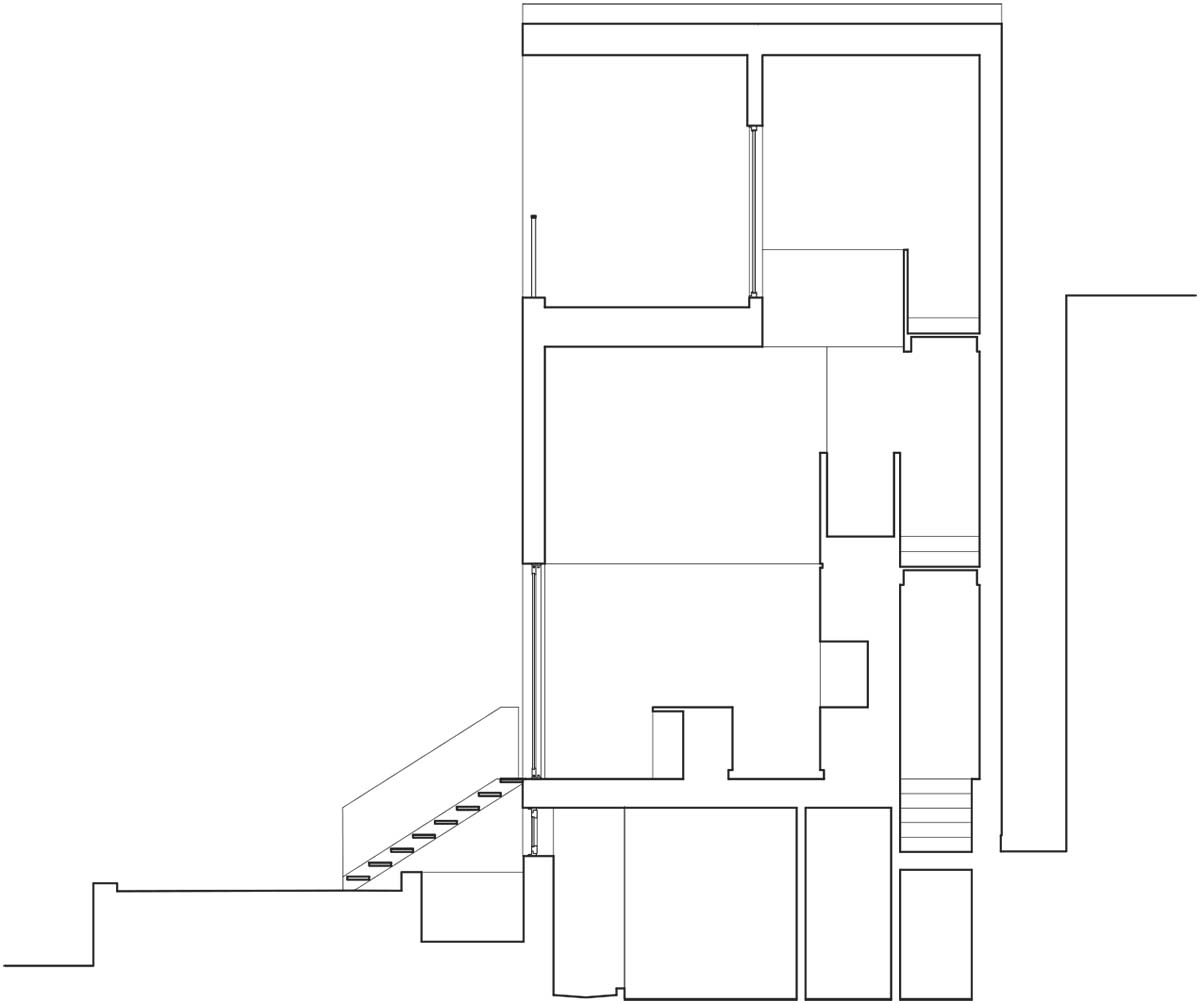
Section
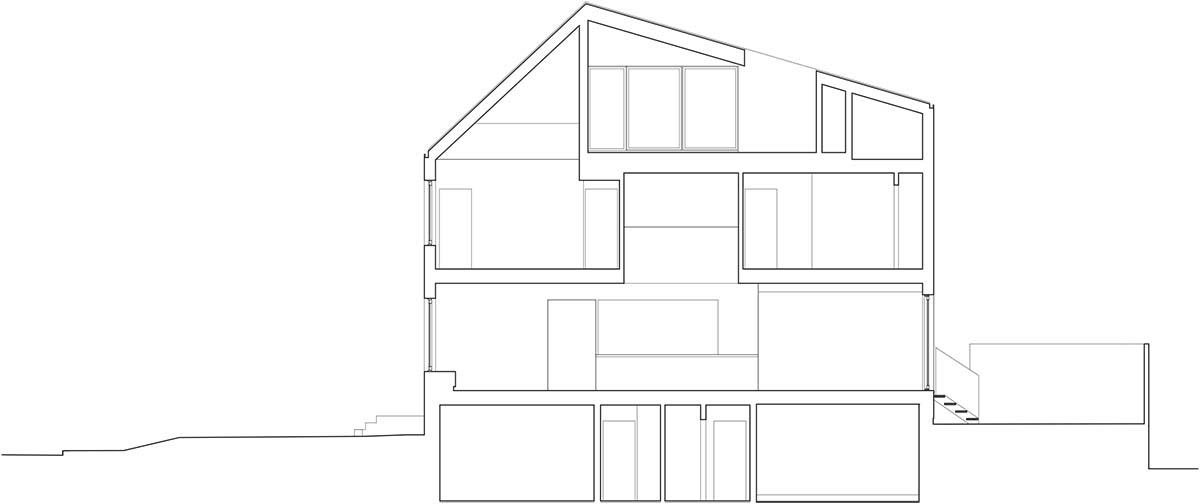
Section
Batay-Csorba Architects, founded in 2012 by Andrew and Jodi Batay-Csorba, is a research-oriented architecture and interior design studio.
Unbound by project type or size, the firm instead is founded on a core set of principles that position each project critically within a larger architectural discourse that directs their objectives and identity as an office.
Project facts
Project name: Humber Residence
Architects: Batay-Csorba Architects
Location: Toronto Ontario, Canada
Area: 2,000 sft
Status: Completed, 2023
All images © Doublespace Photography.
All drawings © Batay-Csorba Architects.
> via Batay-Csorba Architects
Batay-Csorba Architects brick dwelling house residence terrazzo Toronto
